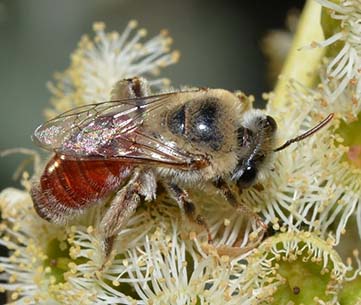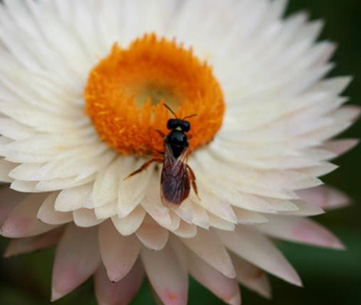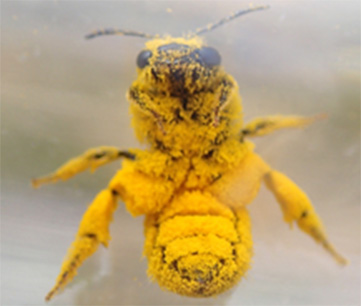

Native Leioproctus sp. foraging on eucalypt. www.bowerbird.org.au
There are over 1500 species of native bees in Australia; most of these are solitary, making their nests in soil and dead wood. About 14 species of Australian native bee are stingless.
Like honey bees, native bees seek nectar and pollen at flowers and in this process transfer pollen to other flowers, thus pollinating plants.
Some studies have shown that native bees are better pollinators of native flowering plants and certain crops compared to honey bees.

Native Exoneura bee foraging on a paper daisy. Melanie Bottrill
In some instances, native bees are able to collect more pollen than honey bees due to the presence of a thick tuft of elongated hair on the hind legs and/or abdomen. The pollen is also more easily dislodged (meaning improved fertilisation) as it is dry, whereas honey bees pack it tightly into pollen ‘baskets’ moistened with nectar.
The majority of food crops require pollination for effective fruit set, with the European honey bee being an effective and non-specific pollinator. However, recent research shows that wild pollinators are also a vital part of our crop systems.

Lasioglossum lanarium coated in pollen. Dr Peter McQuillan
In an international study of more than 40 crops grown worldwide, it was shown that wild pollinators, such as native bees, improved pollination efficiency by greatly increasing fruit set when compared to crops that were pollinated just by European honey bees. The best pollination outcomes were achieved when both European honey bees and native pollinators, such as native bees, were present. Therefore, to enhance crop yields it is critical that new practices need to be considered for the integrated management of both honey bees and native bees.